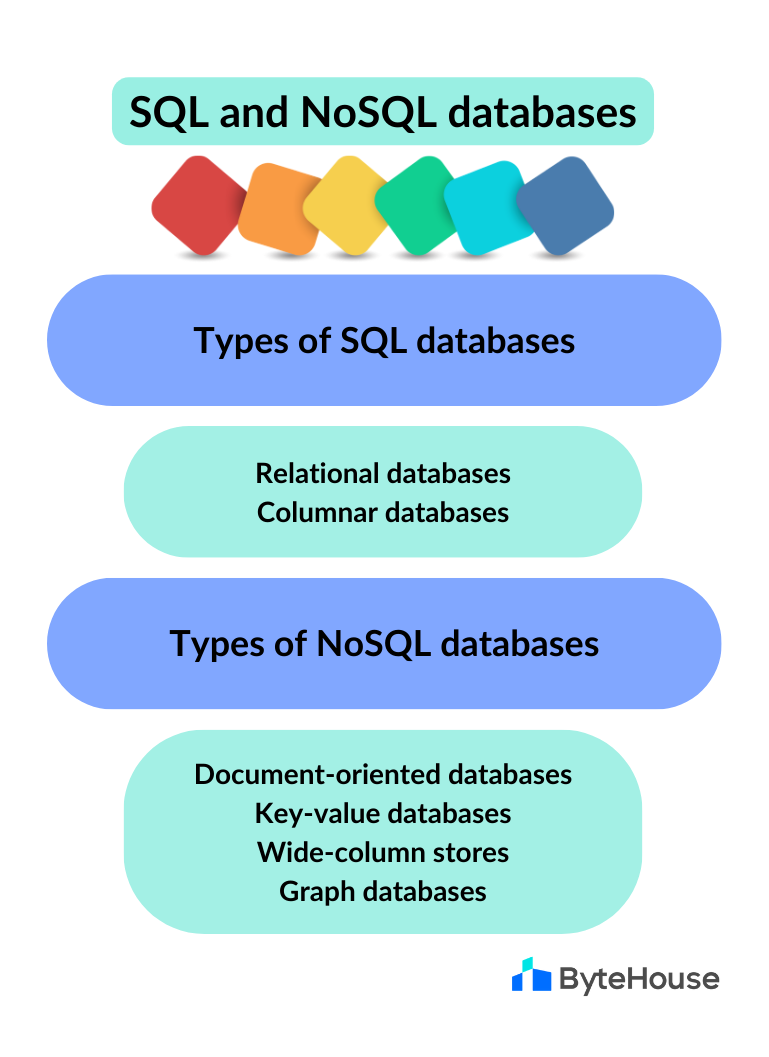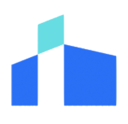SQL and NoSQL databases: What are the types and ideal use cases
Understanding the different types of databases and when to use which
Databases are essential for storing and managing data. They are used in a wide range of applications, from e-commerce websites to social media platforms to enterprise systems.
There are two main types of databases: SQL and NoSQL. SQL databases are relational databases, while NoSQL databases are non-relational databases. Each type of database has its own strengths and weaknesses, and is suited for different types of applications.
This blog post will provide a high-level overview of SQL and NoSQL databases, and discuss the key differences between the two. We will also discuss the different SQL and NoSQL databases, and when to use each type.
Understanding a database
At its core, a database is a structured collection of data, organised for easy retrieval and management.
Databases comprise five main components:
Data: The data that is stored in the database. This can be any type of data, such as text, numbers, images, or videos.
Database schema: The structure of the database, including the different types of data that are stored and the relationships between them.
Database management system (DBMS): The software that manages the database and allows users to interact with it.
Query language: A language that allows users to retrieve and manipulate data in the database.
Storage: The physical storage medium where the database is stored, such as a hard drive or SSD.
SQL and NoSQL databases
SQL, or Structured Query Language, databases are relational databases that use a structured format. They adhere to a fixed schema, ensuring data consistency and integrity. SQL databases are ideal for scenarios where the data structure is well-defined and unlikely to change frequently.
In contrast, NoSQL databases embrace a more flexible, schema-less approach. NoSQL stands for Not Only SQL. It is a term used to describe non-relational databases. These databases are designed to handle unstructured or semi-structured data, accommodating changes in data models more easily than their SQL counterparts do. NoSQL databases are a go-to choice for dynamic and rapidly developing projects.
Types of SQL databases and when to use which
Relational databases
Relational databases, the stalwarts of SQL, organise data into tables with predefined relationships. The tables comprise rows and columns. Each row represents a single record, and each column represents a single attribute of the record. They are best suited for applications with complex transactions, such as financial systems or enterprise resource planning (ERP) systems. Examples include MySQL, PostgreSQL, and Oracle.
Columnar databases
Columnar databases store data in columns rather than rows, optimising query performance for analytical workloads. These databases excel when dealing with large volumes of data and complex queries, making them an excellent choice for data warehousing. Apache Cassandra and HBase are notable examples.
When to use which
The best type of SQL database for a particular application will depend on the specific needs of the application. Relational databases are a good choice for applications that need to store and manage structured data, such as customer records, product information, and financial data. Relational databases are also a good choice for applications that need to perform complex queries on their data. Columnar databases are a good choice for applications that need to query large amounts of data, such as data warehousing and analytics applications. Columnar databases are also a good choice for applications that need to perform real-time analytics.
Types of NoSQL databases and use cases
Document-oriented databases
Document-oriented databases, also known as document stores, are a type of NoSQL database that stores data in documents, which are similar to JSON objects. These databases are well-suited for storing semi-structured data, such as user profiles, blog posts, and product reviews, and are ideal for content management systems, e-commerce platforms, and applications with variable or hierarchical data structures. Popular document-oriented databases - MongoDB, CouchDB, Amazon DynamoDB, Google Cloud Firestore, RavenDB
Key-value databases
Key-value databases, also known as key-value stores, are a type of NoSQL database that stores data in key-value pairs. Key-value databases are very fast and efficient for retrieving data, and are often used in caching and session management applications. When quick data retrieval is a priority and data relationships are straightforward, key-value stores shine. Most popular choices include - Redis, Amazon ElastiCache, Memcached, Riak, Aerospike
Wide-column stores
Wide-column stores, also known as column-family stores, are a type of NoSQL database that stores data in columns, rather than rows. This makes wide-column stores very efficient for querying large amounts of data, and they are often used in data warehousing and analytics applications. Some of the most popular wide-column stores are - Apache Cassandra, Apache HBase, ScyllaDB, Google Cloud Bigtable, DataStax Enterprise.
Graph databases
Graph databases are a type of NoSQL database that stores data in nodes and edges. Nodes represent entities, and edges represent relationships between entities. Graph databases are well-suited for storing and querying data that is highly interconnected, such as social networks, fraud detection systems, and network analysis systems. The best graph database for a particular application will depend on the specific needs of the application. Examples include - Neo4j, OrientDB, Amazon Neptune, Google Cloud Gremlin, JanusGraph

Key differences between SQL and NoSQL databases
SQL and NoSQL databases are two fundamentally different approaches to data storage and management. Each has its own strengths and weaknesses, making them suitable for different types of applications. Here's a comprehensive comparison of SQL and NoSQL databases:
1. Data structure:
SQL: SQL databases are structured around tables, which comprise rows and columns. Each row represents a unique record, and each column represents an attribute of that record. This structure imposes a rigid schema, defining the relationships between data elements.
NoSQL: NoSQL databases, on the other hand, are non-relational, meaning they do not adhere to a predefined schema. They can store data in various forms, including key-value pairs, documents, graphs, and wide-column stores. This flexibility allows for unstructured or semi-structured data storage.
2. Data consistency:
SQL: SQL databases follow the ACID (Atomicity, Consistency, Isolation, Durability) principles, ensuring data integrity across transactions. This ensures that data remains consistent even in the event of failures or interruptions.
NoSQL: NoSQL databases often prioritise performance and scalability over strict data consistency. They may employ different consistency models, such as eventual consistency, which allows for temporary inconsistencies during data replication.
3. Scalability:
SQL: SQL databases are traditionally vertically scalable, meaning they can handle increased data volumes by adding more powerful hardware. However, this approach can become expensive and inefficient as data grows exponentially.
NoSQL: NoSQL databases are designed for horizontal scalability, allowing them to distribute data across multiple servers or nodes. This distributed architecture enables them to handle large amounts of data efficiently and cost-effectively.
4. Schema flexibility:
SQL: SQL databases require a predefined schema, which defines the data structure and relationships. This structure can be limiting for applications that need to handle evolving data requirements.
NoSQL: NoSQL databases offer dynamic schema flexibility, allowing them to adapt to changes in data structure without requiring schema modifications. This makes them well-suited for applications with dynamic data needs.
5. Query language:
SQL: SQL databases use the Structured Query Language (SQL) for data manipulation and retrieval. SQL provides a powerful and standardised way to query relational data.
NoSQL: NoSQL databases employ various query languages depending on their data model. For instance, document-oriented NoSQL databases often use query languages like JSONPath or MongoDB’s query language, while graph databases use languages like Cypher.
6. Use cases:
SQL: SQL databases are well-suited for applications requiring strong data consistency and structured data storage. They are commonly used in e-commerce systems, financial applications, and enterprise resource planning (ERP) systems.
NoSQL: NoSQL databases are ideal for applications that need to handle large volumes of unstructured or semi-structured data, handle dynamic data requirements, or scale horizontally for high availability and performance. They are often used in social networking platforms, content management systems (CMS), and real-time data streaming applications.
In the end, the selection between SQL and NoSQL databases is contingent upon the nature of your application, the scalability requirements, and the complexity of your data model. While SQL databases provide a robust structure for well-defined data, NoSQL databases offer unparalleled flexibility, adapting to the ever-changing demands of modern applications. Making the right choice requires understanding your data, your application’s needs, and anticipating future growth.
